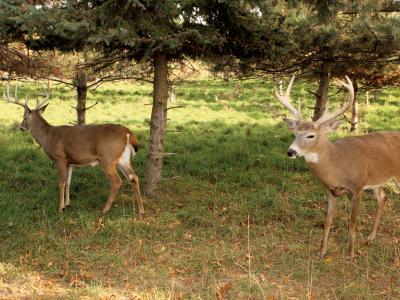 Even before you’ve climbed into your hunting stands this year, a little work on your food plots now can go a long way towards paying out in next year’s hunting season. There are a couple big reasons to work on next year’s fields now; to get crops that must be planted in the fall in the ground and growing, and to get much better weed control.
Even before you’ve climbed into your hunting stands this year, a little work on your food plots now can go a long way towards paying out in next year’s hunting season. There are a couple big reasons to work on next year’s fields now; to get crops that must be planted in the fall in the ground and growing, and to get much better weed control.
Good Fall Cover
Some crops must be planted in the fall to establish a good stand next year, and warm fall days are when you want to get the work done. Alfalfa and cover grasses will already be growing in the spring long before you could ever work a muddy field if you plant them now, but it is important to get them planted and up before any frost, or their dormant cycle begins with cooler weather. The trick is you don’t want them to grow so much in the fall they begin to mature too early. Your seed supplier can recommend planting times in your area. Another major benefit of fall planting is that it will help control erosion in areas that are on slopes.
The second major benefit of working the ground of next year’s food plot now is that it will help you get weeds under control next spring. A couple passes with the field cultivator or disc will rip out weeds just before they likely go dormant for the winter, and once roots are exposed, they’re done. Don’t worry though, there will be plenty more to take their place, but at least it will be more manageable. One thing you do not want to do, however, is leave fields bare on slopes which can cause erosion and washouts in severe cases.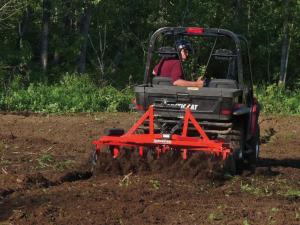
For crevices and valleys between hills and slopes, leave a grass waterway at least 10’ wide to help control erosion. Your best bet in those areas is simply to mow whatever is already growing but not expose bare ground by ripping existing plants out. If you already have erosion areas, you can control it with careful working of the ground and then by planting thick grasses to slow down or trap water. In some areas diversion step dams or a stone or straw bale filter may be necessary. Only work this ground when you’re not expecting any eminent hard rains which could wash away your work.
Our Favorite Tool
Our favorite tool for just about any ground working job is the field cultivator because of its versatility. It can be set to go deep to rip out weeds, or used lightly to create a smooth seed bed. Its drawback is in heavy sod or dense grasses, however, which can plug it by bunching up between the tines. A plow will usually turn short grass or sod over, and a disc will cut heavy grasses down to size. With a disc you must be careful not to create an uneven field by driving in the same track many times over. If you intend to use a disc, drive at a moderate walking speed, and go in the opposite direction on the next pass or at least at an angle to the previous time across the field. If it’s already raining and muddy, forget it. It’s too late, the field will probably never dry out again this year, and you’ll have to work it in the spring.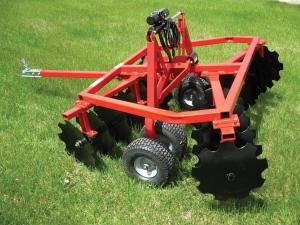
We’ve seen many pull behind tools for ATVs and UTVs, but a couple brands stand out for their quality and versatility. KUNZ ENGINEERING makes only a couple ground working tools, but their Till-Ease hybrid field cultivator / chisel plow is the heaviest we’ve ever seen, other than behind a 400hp Deere. It’s well designed, built with Ag quality components, and if you could hook 50 of them together, you could farm all of Iowa. Another special feature on the Kunz Till-Ease is the trash coulters at the front which slice up any stalks, allowing the tines to do a better job. It might take an extra pass to produce a smooth seed bed with the Till-Ease, but you can forget buying a plow.
QUADIVATOR has a complete lineup of every tool you could need to put in a food plot or field, including a planter! Our favorite though is their field cultivator that looks just like a scaled down version of the one on every farm in North America. The Quadivator field cultivator does an excellent job at producing a smooth seed bed, especially when using the rear rake. This tool is also built with Ag quality components such as shovels and tines, although we doubt you’ll ever wear them out. They’ll be in the field long after you will.
Good Hunting
Whatever tool and brand you choose, the steps to a great food plot are the same and you can do a lot of the prep work in the fall. With a little luck, you’ll be going from food plot to frying plan! Good Hunting!
- Get weed control
- Don't work it wet
- Create a smooth seed bed & fertilize
- Plant, Pray, & Play
QUADIVATOR
866-770-2169
www.quadivator.com
KUNZ ENGINEERING
815-539-6954
www.kunzeng.com
 |
 |
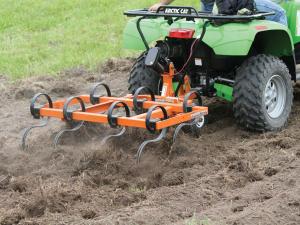 |
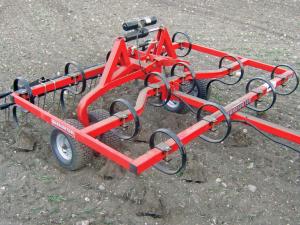 |
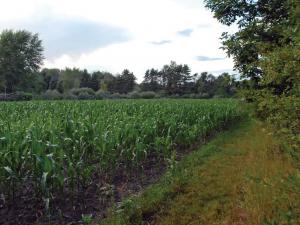 |








